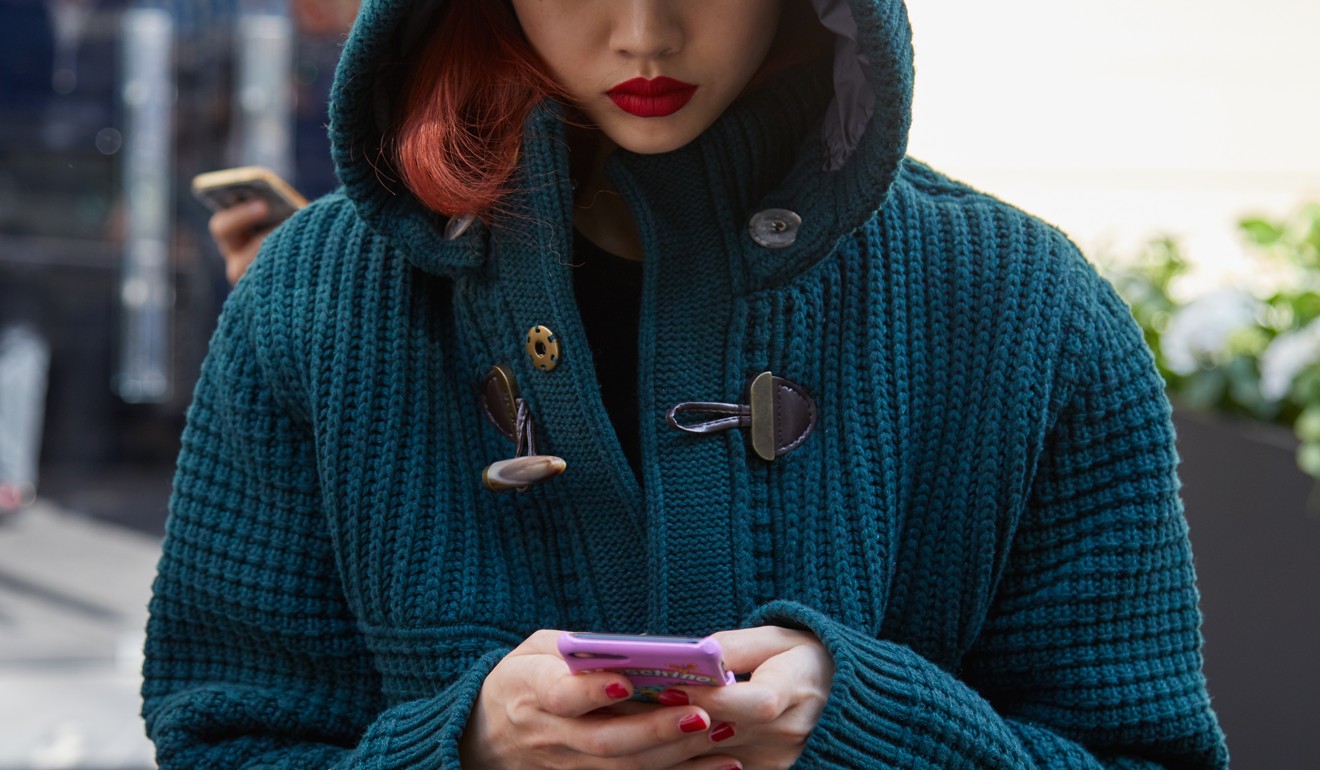
Asian fashion influencers deserve the respect of luxury industry – so isn’t it time they had some?
- ‘Amateur photographers’ read the tart caption on an Instagram post of Asian fashion influencers and journalists videoing and snapping a Chloé show in Paris
- While its author meant no ill, it was emblematic of luxury’s disdain for the people representing its clients in what will soon be fashion’s biggest market
As the autumn/winter 2019 fashion shows were getting under way in Paris in late February, an Instagram post by Robin Givhan, the fashion critic of The Washington Post, sparked controversy among Asian media representatives attending Paris Fashion Week.
The photo depicted a group of Asian guests, including prominent editors and influencers, holding up their phones to film the parade of models at the end of the Chloé show.
A flurry of comments, some of them accusing Givhan of insensitivity and even outright racism, flooded the post, which Givhan had tersely captioned, “Amateur photographers”.
Prominent members of the fashion community, including Susie Lau aka Susie Bubble, Bryan Grey Yambao, known as Bryanboy, and Tina Craig of Bag Snob, who all have Asian backgrounds, also weighed in, directly addressing Givhan and pointing out how the post could be perceived by Asian media representatives, especially those portrayed in the picture.
Robin Givhan’s Instagram post
As someone who has attended the fashion shows in Europe and New York for well over a decade as part of the Asian contingent (I am in fact the only non-Asian face to appear in Givhan's photo), I can certainly understand why the post struck a nerve.
While it was by no means intentionally racist (Givhan, who is African-American, has written extensively about diversity and representation in fashion), that was how it was perceived. And it undeniably perpetuates certain stereotypes about Asian journalists, who often feel sidelined and looked down upon.
Now more than ever, fashion is a global industry, which is why it's ironic that, although Western luxury brands could not survive without high spenders from Asia, the editors who every season make the long journeys to London, Milan, Paris and even New York to cover their shows don't receive the same level of respect as do their Western counterparts.
This is in part due to obvious factors such as physical proximity (if you're a journalist based in London or Paris, you're closer to the powers that be) as well as language barriers and the unspoken truth that legacy publications from the West still wield a disproportionate amount of power.

This is by no means limited to Western companies. Tokyo-based Comme des Garçons, which owes the success of its many fashion lines and its thriving retail chain Dover Street Market in no small part to Asian consumers, is notorious for not granting access to Asian media. At its shows in Paris, editors from countries where the label has no retail presence and no significant customer base often get the best seats in the house, while top journalists from Asian nations where the brand has thriving businesses do not get invited to its shows or are relegated to the nosebleed standing section.
While it's unfortunate that Givhan's post – which was not intentionally malicious, as she made clear in her responses to some of the comments – has become representative of this imbalance of power, it’s emblematic of larger issues affecting the fashion industry.
In recent years the power has shifted from brands to consumers and from old-school magazines to social-media platforms such as Instagram. For the luxury business a similar shift, from West to East, is happening (according to a McKinsey study done with The Business of Fashion, China will overtake the US this year as the world's largest luxury market).
You only have to go for a stroll on Rodeo Drive in Los Angeles, Madison Avenue in New York, Rue Saint-Honoré in Paris or Bond Street in London to see that the people who actually buy luxury products are members of the rising middle class from countries such as China, old-money types from Hong Kong and Singapore, and fashion-obsessed millennials from Indonesia, Thailand and Vietnam.


Luxury CEOs and public relations executives who fawn over them when they host grand events in Shanghai, Seoul or Hong Kong and then snub them on their home turf had better start recognising that, if they want to keep reaping the benefits of Asia's growing appetite for luxury, their attitudes need to change.

